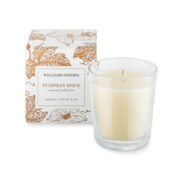Squash, Cucurbita pepo, a Central American fruit that inspires generousity.

© Aislinn Adams 2008 Squash, Cucurbita pepo.
Celebrating the arrival of squash.
Squash season is here so this week I’m posting a botanical illustration to celebrate its arrival. When I illustrated this black and white illustration for the “Digging In” gardening column of the Washington Post I didn’t have time to research its story. Writing blogs about my botanical illustrations allows me time to research my subject in more depth- a very enjoyable endeavor.
Sorting out the different kinds of squash can take a while. They are loosely divided into two groups – summer or winter squash. Squash, also called marrow or pumpkin, usually refers to four species of the genus Cucurbita– C. maxima, C. mixta, C. moschata and C. pepo. The summer squash varieties have thinner skins and can be eaten raw whereas the winter squash usually have tougher skins and need to be cooked. The botanical illustration above, Cucurbita pepo, is a summer squash and includes such varieties as standard field pumpkins, small pie pumpkins, acorn squash, vegetable spaghetti, pattypan, summer crookneck and zucchini (also known as courgette).
There’s no waste on a squash!
One can eat nearly all parts of the plant. Apart from the fruit, squash seeds can be eaten directly, ground into a paste, or pressed for vegetable oil. The shoots, leaves and tendrils can be eaten as greens. The blossoms too are an important part of Native American cooking and are also used in other parts of the world.
A fascinating journey!
Little did I realize when I began to research squash that it would lead me on such a journey. So much so that I am now hard put to keep this blog entry short. There is enough material in what I’ve learned for a month of blog posts but I don’t have a month of squash illustrations. I will have to save some of the squash’s story for later blog posts and new botanical illustrations.
Central American caves, the Wampanoeg people and a Patuxet named Squanto.
The more I read about squash, the deeper the story goes. I travel from caves in central America, where archaeologists found 8000-10,000 year-old squash seed (Cucurbita pepo), to the Wampanoag tribe of New England and a Patuxet named Squanto (or Tisquantum) who, despite being captured and sold as a slave to the Spanish and later regaining his freedom and finding his way back to his homeland, helped Plymouth colonists survive those first harsh winters in New England by teaching them how to cultivate corn, squash and beans.
The “Three Sisters”- a clever combination.
The “Three Sisters”- corn, squash and beans- were the main indigenous plants used for agriculture in the Americas. The corn provides a climbing structure for the beans and shade for the squash, the beans fix nitrogen into the soil, and the squash spreads across the ground providing cover from weeds while keeping the soil moist.
Origin of the name squash.
The word squash comes from the Native American word askutasquash: a Narrangansett word meaning ‘a green thing eaten raw’. Narragansett, an Algonquin language, is related to the Massachusett and Wampanoeg languages.
The important role of Wampanoeg women as farmers.
Squash was also a staple of the Wampanoeg diet. Wampanoeg women were responsible for farming and fruit and nut gathering. This meant they provided up to 75% of all the food needed in Wampanoeg societies (Wikipedia [4] ). The importance of their role as food providers is reflected in the status they enjoyed in their communities: land was passed down through women i.e. matrilineally, and they often held leadership positions. As it was the women who grew the food they, along with Squanto, must have been responsible for teaching the Plymouth colonists how to grow the “Three Sisters” during those first few critical years.
The next time you pick up a squash, pause a moment to consider it’s long and bountiful history: the generosity of the Wampanoeg people who shared this food willingly, and nature’s generosity in providing us with such a nourishing food for over 10,000 years.
Aislinn Adams




have been looking up info on Augustine Henry-there is a memorial garden at Portglenone here in N.I.- for a talk I am preparing for a speakers test!The info on squashes was good- this year i tried growing them but have not eaten them yet-also lots of cougettes which are turning into marrows- they make a great zucchini slice and you drawings are lovely too.
HI Ross,
Nice to get a comment all the way from N.I. If you have a transcript of your talk I’d love to read it sometime. Good luck with the courgettes-marrows. Aislinn
Great tip…my pops always said The best way to garden is to put on a wide-brimmed straw hat and some old clothes. And with a hoe in one hand and a cold drink in the other, tell somebody else where to dig.”
Sounds like your pop has some good ideas!!!